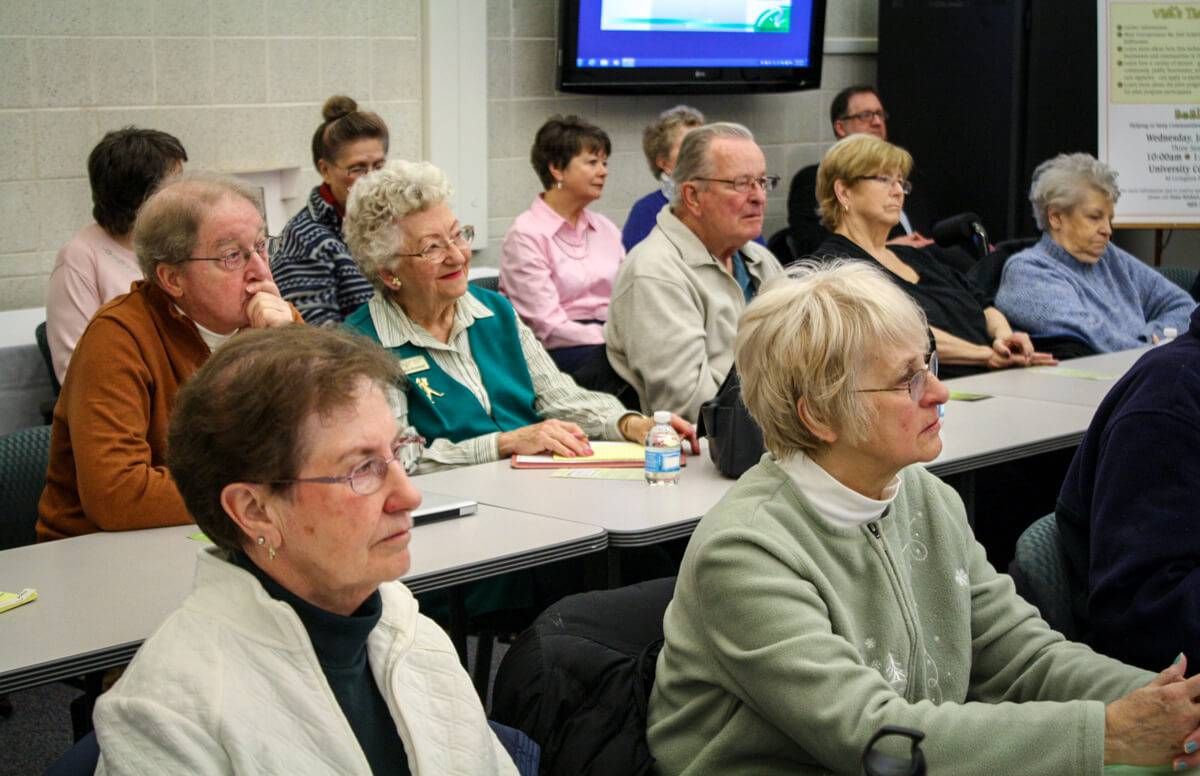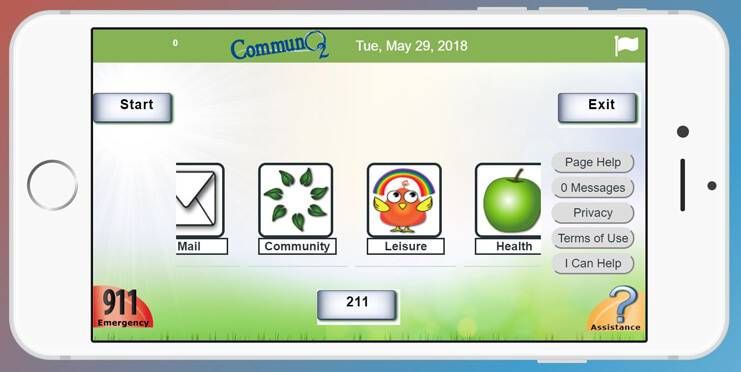Tech Venture Ties Rural Elders to Their Communities
CommunO2 is piloting its new computer platform in rural Michigan
(Editor’s note: This story is part of a special report for The John A. Hartford Foundation.)

Entrepreneurs are increasingly attracted to the longevity marketplace. Although its products are long associated with late-night infomercials (think burial insurance and denture cream), I’ve watched in recent years more entrepreneurs moving into the aging market and offering increasingly sophisticated products and services.
These entrepreneurs typically use information technologies (IT) to create systems allowing older adults to connect with the wider community, ranging widely from employers to caregivers.
You probably haven’t heard of these ventures. They’re usually small, innovative enterprises fighting against the odds to reach scale. But overall, an infrastructure of innovative longevity companies is developing.
‘Oxygen’ for the Older Adult Community
One that is piloting its platform in a rural Michigan community is CommunO2 (Community Oxygen), a Minneapolis-based company led by founder and CEO Joel Ackerman.

At 66, he is a veteran of UnitedHealth Group, the giant health care company, and also a serial entrepreneur. The high-tech platform Ackerman has been working on for more than a decade is largely a bootstrap operation. The platform offers older adults a user-friendly high-tech connection to local organizations in their community.
Here’s what I find intriguing. A major goal of the CommunO2 “thrive in place” platform is tapping into the power of IT to combat social isolation among older adults, as well as to support family caregivers.
Loneliness is increasingly recognized as a threat to quality of life as we age. The research is compelling: A lack of social relationships and interactions heightens the risk of an early death, much like smoking, obesity and inactivity.
A Focus on Social Ties
“We want to age in community as we age in place,” says Ackerman. Adds Dona Wishart, executive director of the Otsego County Commission on Aging in Gaylord, Mich.: “The focus is on social connectivity. We want to diminish social isolation.”
CommunO2 recently ended a two-year pilot program in Otsego County, population 24,000. The experiment was supported by the Otsego County Commission on Aging with funding from the Michigan Health Endowment Fund.
A new two-year pilot is slated to begin in late June. This time, it will include three Michigan communities — Otsego County (rural), Flint (urban) and Traverse City (flourishing micropolis). Scholars at Michigan State University will evaluate the pilot along several key social isolation measures.
The program is free to consumers; participating community organizations will be charged a fee. (Funding for the pilot program will pay the fee for 75 community participating organizations — 25 from each community.)
Services from Local Organizations
The platform is designed to allow access to a wide range of services with a single login. The menu of options is easy to navigate, and support to deal with problems or confusion is free. There are no ads, data isn’t sold and cybersecurity is strong since it’s a closed network.
The platform offers several services, including video calls, regular calls, video travel, remote participation in local events and attending religious services through cameras (with participating institutions). The new pilot effort hopes to add connections to a broader range of social services, professional services and health care organizations.
“There is competition at the component level,” says Ackerman. “But I haven’t seen anyone pull together the cumulation of services free to consumers with a single sign-on. For now, [we have] no direct competition.”
Volunteering from Home
Keith Moore is an enthusiastic supporter. He’s executive director of United Way of Otsego based in Gaylord, a town of less than 4,000 and the county seat. Known as the Alpine Village, Gaylord is largely a tourist and recreation town. “We are an aging community,” he says. “We are a retirement community.”
United Way participated in the pilot in its work at preventing older adults from aging alone. Moore emphasized the program’s e-volunteering component, also known as virtual volunteering and online volunteering. Older adults who find it hard to leave their homes can still volunteer to tutor, mentor young people and contribute to other volunteering activities through the safe and secure online program.
“When you’re socially connected and you feel supported, you stop declining,” says Moore. “We want to keep the volunteer engaged and slow the decline.”
A Way to Stay Involved
Jan Lake works at Nelson Funeral Home and Cremation Service in Gaylord as an pre-arrangement specialist. Nelson’s has used CommunO2 to let people who are unable to get to a funeral planning meeting and the funeral service the ability to participate. “We hear it all the time — ‘I wish there was a way to join the funeral,’” she says. “We wanted people to know there is an option.”
These examples illustrate the promise of information technologies to break down barriers and make connections easier. Of course, as CommunO2 and many similar entrepreneurial ventures have found, it’s hard to get institutions to accept the platform, especially in the heavily regulated health care and finance industries.
Still, I find experiments like CommunO2 and the pilot program in the three Michigan towns encouraging. Whether the company succeeds or not — the marketplace will make that determination — experiments like these are welcome additions to the longevity market.


The John A. Hartford Foundation is a private, nonpartisan, national philanthropy dedicated to improving the care of older adults. The leader in the field of aging and health, the Foundation has three priority areas: creating age-friendly health systems, supporting family caregivers, and improving serious illness and end-of-life care.

